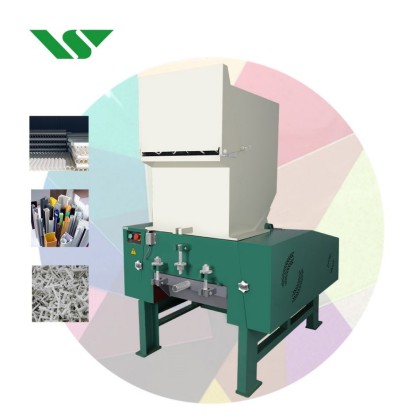Understanding and Tackling White Pollution: A Guide to Reducing Plastic Waste
2024-11-04 Page view:
White pollution, primarily caused by plastic waste, poses an ongoing environmental threat to our ecosystems, wildlife, and public health. Due to plastics' long lifespan and resistance to degradation, these materials often accumulate, impacting natural areas and endangering animals. With proper awareness and action, however, it's possible to reduce the impact of white pollution. In this guide, we'll explore the different levels of white pollution, why reducing it is crucial, and what we can do to manage this pressing issue.

1.The Severity Levels of White Pollution
White pollution can vary in intensity and impact depending on how much plastic waste has accumulated in a given area. By understanding the severity levels, we can develop targeted strategies to address each situation effectively.
Slight Pollution
Slight white pollution typically involves small amounts of plastic waste concentrated in specific places, such as city parks, beaches, and local streets. Although manageable, this level of pollution still disrupts local environments and can pose risks to wildlife. Regular clean-up efforts, along with community recycling initiatives, are effective methods for controlling slight pollution and preventing it from worsening.
Moderate Pollution
Moderate white pollution occurs over a broader area, often spreading to suburban areas, rivers, and farmland. This level of pollution can have significant environmental impacts as plastics spread into areas where wildlife may encounter and ingest them. Addressing moderate pollution requires structured clean-up projects, public awareness campaigns, and education efforts to encourage responsible waste management and recycling practices.
Severe Pollution
Severe white pollution is characterized by an extensive spread of plastic waste over large, often remote areas like oceans and forests. At this level, the pollution not only disrupts ecosystems but can result in severe harm to animal life, such as marine creatures that mistake plastic for food. Severe white pollution calls for coordinated actions among governments, NGOs, and communities to initiate large-scale clean-ups and implement alternative materials to reduce plastic dependency.

2.Why Reducing White Pollution Is Essential
Reducing white pollution is vital for environmental and public health reasons, but it also has economic and resource-saving benefits. Here are the key reasons why reducing white pollution is critical:
Soil Health Preservation
Plastic waste in soil can block the natural flow of air and water, stunting plant growth and reducing agricultural productivity. Additionally, the toxic chemicals released as plastic degrades can seep into the soil, potentially contaminating food crops and reducing soil fertility.
Protecting Water Ecosystems
Plastics often end up in rivers, lakes, and oceans, affecting water quality and posing risks to aquatic life. Marine animals can ingest plastic waste, leading to health complications or death. Floating plastic waste can also form large clusters, known as "plastic islands," which further threaten the delicate balance of marine ecosystems.
Resource Conservation
Since plastics are produced from non-renewable resources like petroleum, reducing plastic usage helps conserve these materials for future generations. Using alternatives, such as reusable or biodegradable materials, reduces our reliance on single-use plastics, supporting a circular economy that benefits both people and the planet.

3.Effective Strategies for Reducing White Pollution
While white pollution may seem overwhelming, adopting the following strategies can make a substantial difference in its reduction:
Promoting Recycling and Reuse
Establishing accessible recycling programs and encouraging the public to recycle plastics can help reduce the volume of waste entering landfills. By separating plastic materials for recycling, we can convert waste into reusable resources, supporting a sustainable cycle.
Using Effective Processing Tools
Machines like crushers play an essential role in breaking down large pieces of plastic waste, making them easier to transport and recycle. By crushing plastics into smaller pieces, waste can be reprocessed efficiently into new items, supporting resource recovery efforts.
Developing Alternatives to Plastics
Investing in alternative materials, such as biodegradable plastics, paper, or fabric-based products, reduces reliance on traditional plastics. Encouraging businesses and consumers to adopt these alternatives can alleviate the environmental burden of plastic waste, especially in sectors with high plastic consumption, like packaging and retail.
4.Conclusion
White pollution is a pressing environmental issue that requires a concerted effort to manage. By understanding its varying severity, recognizing the importance of reducing it, and implementing practical solutions like recycling and better waste.



